|
HEALTH How airlines can help ease fear of flying and aviation phobiasThe tragic air turbulence fatality on SQ321 en route from London to Singapore on 21 May 2024 has provoked fresh fear of flying chatter. The phobia afflicts millions. Some ways to beat white-knuckle terror aloft. by Libby Peacock updated by staff reporters April 2025, graphics: Winnie Choi SEE ALSO Concierge Travails 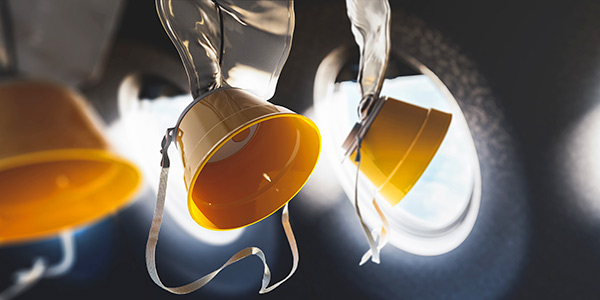
People who suffer from fear of flying tend to be highly intelligent and extremely imaginative. “They can easily conjure up escalating images of disaster". ON 21 May 2024 Singapore Airlines flight SQ321 bound from London to Singapore hit a serious patch of air turbulence. It left the aircraft interiors mangled, one passenger dead and scores injured, forcing the aircraft to make an emergency landing in Bangkok. Then on 26 May a Qatar Airways flight from Doha to Dublin hit a rough patch injuring 12 passengers as thre aircraft crossed Turkey. This was yet more frightening fodder for the millions afflicted by fear of flying — aviophobia — recognised as a genuine medical anxiety syndrome. Air turbulence and fear of malfunctioning machinery is part of what causes white knuckles aloft. The extreme SIA event and the Qatar shaking were not isolated incidents. More flyers are encountering mid-air turbulence as climate patterns and winds change. In December 2023 an Emirates A380 (flight EK421) en route from Perth to Dubai ran into severe turbulence that left 14 injured. The plane landed safely in Dubai. While some adventurous companies like turbli (turbli.com/) take a stab at calculating projected air turbulence on various routes, this may not reassure the fear-of-flying clan. But let me recount my own experience. After several years of living in Hong Kong, my family and I were about to leave Asia – but not before a final visit to Vietnam and Laos as a parting gift to ourselves. We asked our travel agent to book the flights but, when the itinerary arrived, I discovered that not only was the Hanoi-Luang Prabang sector operated by Lao Airlines, but the aircraft was – horror of horrors – a turboprop. Panic set in. While I cope reasonably well on large jets provided there is no turbulence about, small planes and dodgy airlines terrify me. This episode was many years ago but the very thought is enough to rattle me still. I am not alone. Between 30 to 40 percent of people experience fear of flying ranging from “mild concern” to avoiding flying altogether, estimates the Australia-based Macquarie University Anxiety Research Unit (MUARU). This particular phobia (also known as aerophobia or aviophobia) strikes men and women from all walks of life, including many frequent flyers. Send us your Feedback / Letter to the Editor South African publicist Tanya White flies every month for her job. “During most flights I cover the whole range of emotions, from a bit nervous to absolutely terrified and back again. Take-offs and landings are bad, turbulence absolutely terrifies me and anything vaguely out of the ordinary is likely to push me over the edge. I am quite frankly, and quite irrationally, just petrified of the aircraft falling out of the sky,” she notes. {Take-offs and landings are bad, turbulence absolutely terrifies me and anything vaguely out of the ordinary may push me over the edge... White believes her fear of flying may be linked to a “rather frightening” international flight at the age of 11, which “pretty much set the tone” for the rest of her life. “I dread every flight I ever have to take and regret having boarded the plane every single time I do it. During the flight, I’m tense and anxious, even getting to the point of tears when we encounter turbulent weather, which I find absolutely terrifying. I can’t read, certainly can’t sleep and end up disembarking in a state of exhausted euphoria from having survived another one!” “I hate doing it and I often threaten to resign purely because my job requires that I fly, but it’s a bit like childbirth: every time I get off a plane, I forget just how bad it was until the next time. Still, it adds to my stress levels and I recover less quickly from travelling, as the anxiety is very tiring,” White remarks. "It's a bit like childbirth. Every time I get off a plane I forget how bad it was until the next time..." Project manager Bianca du Plessis, “an uncomfortable, nervous and downright neurotic flyer”, describes her fear as a “loss of control thing”, adding, if the plane is going down “there’s nothing you can do about it.” Du Plessis, who gets particularly nervous “when the aeroplane is old or the tickets are cheap”, finds that muscle relaxants help on long-haul flights and good books on short ones. “Bad weather can be very scary. I fly if I have to, but I’m always a bit ratty during takeoff and landing. And turbulence. And the bits in between.” A 2000 study found that one in three air travellers experience some kind of fearful response to air travel, says Hong Kong-based psychologist and hypnotherapist Dr Melanie Bryan. “Fear of flying is probably the second-most common fear that people come to me with, after public speaking. Most people who consult me develop it after years of frequent flying. It’s a phenomenon that tends to occur at certain life changes or trigger points, such as the birth of a child or after turbulence. People are then haunted by this and develop fear of flying in spite of having flown comfortably for years.” 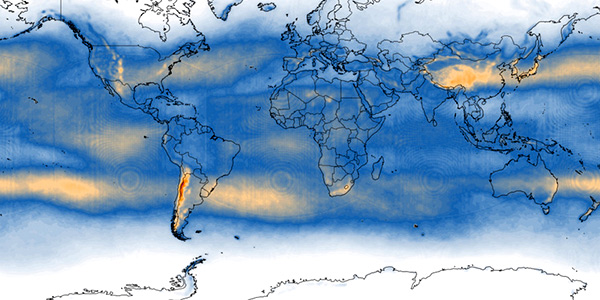
An enhanced 2023 average air turbulence map of the world (at 34,000ft). Analytics company turbli tracks and forecasts data for flight routes. Disturbances are more common along northern and southern jet streams, around the equator, and near mountains like the Himalaya, the Rockies and the Andes/ map graphic: turbli Where “comfortable flyers” see their flights as a means to an end, fearful flyers see a flight as an end in itself, Dr Bryan explains, adding that aviophobia is not “one class” of fear. “There’s a range. While some people are mildly anxious, others are paralysed. Some people get nervous as soon as the flight is booked. Others are terrified of takeoff, but OK with landing, or the other way round. For some people it’s the sounds that worry them. Many will keep their eyes on the flight attendant and if they see her moving quickly, they think they’re doomed – meanwhile it’s probably just that the captain wants a cup of tea.” Pointing out that even the language of flying – phrases such as “your last call” and “final check-in” – tends to be anxiety producing, Dr Bryan says she employs a number of techniques to treat aerophobia. These include hypnosis, energy techniques and teaching ways for clients to calm themselves down. Treatment is individually tailored, since fears vary widely, from being scared of “tipping the plane” to worrying that other people’s chatting would somehow “disturb” the aircraft. Dr Bryan adds that people who suffer from fear of flying tend to be highly intelligent and extremely imaginative. “They can easily conjure up escalating images of disaster. Their bodies react to these dreaded images by getting ready for immediate, defensive action, setting off their alarm system replete with pounding heart, sweaty palms and that weak-in-the-knees feeling.”
Hongkong-based Toshiko Sawada was always a nervous air traveller, but developed serious fear of flying after a turbulent North Asian flight. “The nervousness causes my neck muscles to tighten and I have to resort to breathing exercises to calm myself somewhat. I feel my heart racing and my palms getting wet with anxiety,” she says. Sawada has read self-help books and articles on the subject and finds that a natural stress relief spray helps slightly. She finds it easier to travel with her husband and children. “With my little girls, I focus on their needs and the distraction seems to be of some help. Generally, I am better able to cope now, but the fear is still there.” {She finds it easier to travel with her husband and children. "With my little girls, I focus on their needs and the distraction seems to help..." She is most affected on long flights and during bad weather. “Also, I am very sensitive to news about flight disasters and it doesn’t help if some such event occurs shortly before my flight. I do not fly on small planes, but only on large jets. I also will not fly on second-tier airlines. I also research extensively, paying attention to different airlines’ safety records.” A study done at the Stanford University School of Medicine in the late 1990s showed that more than 60 percent of fearful fliers used sedatives or alcohol to try to reduce their fear. But while alcohol may temporarily relax fliers, it could also make them anxious and hamper business travellers’ ability to work after landing. While muscle-relaxant drugs may provide relief for occasional flyers, this isn’t a long-term fix, according to the United States-based Anxiety Disorders Association. One frequent flyer who does occasionally rely on the “relaxing” effects of alcohol is Sydney-based consultant William Parker (not his real name), who flies regularly around Asia for his job. Parker says his fear of flying started 30 years ago. “I didn’t have any problems initially and flew in planes and gliders without a problem until I started reading about plane crashes. Since then, I kept thinking about crashing whenever I flew. It got so bad that I once gave up flying for a year and took trains instead, but it was just too difficult and I bit the bullet and went back to flying.” Parker did the Qantas programme years ago. While he found it beneficial, it still was a “rational approach to an irrational phobia”. He has also tried hypnotherapy, which worked “on the ground”, but he struggled to get himself calm enough to use it in the air. Deep breathing does help “bring the adrenaline down”, as do working, reading or watching movies… “anything that distracts me”. He finds that alcohol helps him relax when he feels really nervous. “I am famous for my hip flask, but the new cabin restrictions have been playing havoc with this,” Parker says, adding that he insists on flying business class, because he finds the immediate service comforting. Parker insists on flying business class because he finds the immediate service comforting “I won’t get on a small plane and I also use the bigger-name airlines. I won’t use the cheap ones. I keep track of storms and I would avoid flying somewhere if I know there’s one coming on. If it’s a good airline and fine weather it’s much easier.” Parker recalls incidents where he had to turn to the crew for help and found that simply having a stewardess sit and chat with him for a while proved helpful. He advises fellow sufferers to find ways to distract them. But while some people think that the more you fly, the more “used to it” you become, he finds that flying more “locks in the fear”. A number of major global airlines offer fear of flying courses, often in conjunction with private companies. Much of this is online now as the Covid pandemic cut into travel and sign-ups. Qantas ran a well-acclaimed and longstanding programme with its Fearless Flyers, a non-profit group that estimated almost one in four people to have fear of flying. The programme was dropped in the Covid years but some of it survives online. (The courses run by pilots, air traffic controllers, aircraft engineers and meteorologists, as well as a psychologist, covered topics such as the physiology of fear, effective relaxation techniques, what makes an aeroplane fly, aircraft design, testing and maintenance, weather forecasting for aviation and navigation for commercial aircraft. It also included a visit to a flight deck.
British Airways offers online courses for its Flying With Confidence programme.. This was initially in affiliation with Aviatours (www.aviatours.co.uk). Aviatours says it has helped tens of thousands of nervous flyers over the years, with a 98 percent success rate. Virgin Atlantic's Flying Without Fear (flywith.virginatlantic.com), offers webinars, a 30-day course and podcasts. one-day courses throughout the year. Says the airline, "We’ve teamed up with Lovefly, who offer a range of courses and advice to help you conquer your phobia. Co-founder and ex cabin crew trainer Paul Tizzard has been supporting nervous flyers since 1997, when he set up our ‘Flying Without Fear’ programme with the backing of Richard Branson." The original programme also included an optional 45-minute flight with running commentary by a pilot and estimated that more than 10 million people in the UK suffered from fear of flying. The programme claimed a success rate of more than 98 percent. Low-cost airline easyJet runs runs fear of flying courses that it claims can help overcome your phobias in "less than 3 hours!" Quite a boast but it takes this business seriously A basic online course with 30-day access to material is priced at €97while a more elaborate online course with lifetime access comes at €167. An experienced pilot from easyJet takes viewers through the intricacies of turbulence, funny noises in-flight and, most importantly, helps demystify take-offs and landings. {An experienced pilot takes you through the intricacies of turbulence and funny noises and, most importantly, helps demystify take-offs and landings... In the Netherlands, the Leiden VALK Foundation (www.valk.org) in conjunction with KLM and Schiphol airport offers fear of flying courses. The Dutch company estimates one in three flyers suffers anxiety onboard. VALK starts things off with a 90 minute chat with a therapist who will chart out a treatment plan. The company cautions: "Fear of flying is considered a specific phobia by the health insurer. Health insurers do not reimburse psychological treatment for a specific phobia." This may vary from country to country. The intake interview and diagnostics mid 2024 was priced at €300 and subsequent 45-minute-to one-hour sessions cost €150. The icing on the cake is a, two-day "flight training including KLM return flight and follow-up training" for €1149. According to onetime spokesman Van Gerwen who we first interviewed over a decade back, women who are fearful flyers generally tend to be afraid of crashing and losing control of their emotions while men are afraid because they cannot control the airplane and fear heights. The trick lay in understanding these triggers and dealing with them. Swiss International Airlines, in conjunction with others, offers German-language “Fit to fly” (www.fit-to-fly.ch) weekend seminars usually at Zurich Airport. If you can’t get yourself to a course, try one of several self-help programmes on offer globally. The SOAR Fear of Flying programme (www.fearofflying.com) is available online. The programme, founded by United States commercial airline pilot and licensed therapist Captain Tom Bunn, has been in existence since 1982 and is based on a “two-step process”, including teaching how flying works and the psychology of aero-anxiety, as well as one-to-one telephone counselling. The Guaranteed SOAR Programme package (US$595, including individual counselling) offers a full refund if the course is unsuccessful. There are also less comprehensive courses for those who primarily want to understand how and why flying is safe or mainly want to learn to control their anxiety. Web-based Anxieties.com (anxieties.com) has self-help courses for fearful flyers run by Dr Reid Wilson, who has "spent his entire 30-year career in the field of self-help for anxiety disorders and OCD." Dr Wilson is a popular author and has appeared on numerous TV shows. He set up the original American Airlines program for fearful flyers.. The courses cover areas like panic attacks, claustrophobia, stuffiness, turbulence, mechanics and trust.The process involves a digital kit for Achieving Comfortable Flight. A relatively new approach to fear of flying involves the use of virtual reality. One US organisation offering this is Virtually Better (www.virtuallybetter.com), a clinic staffed by clinical psychologists that specialise in treating anxiety disorders. Virtual reality treatment takes place in a carefully designed “virtual environment” exposing patients to “the feared situation” (flying) without taking them into an aeroplane. A psychologist controls the virtual environment. Virtual reality exposure treatment allows the therapist to manipulate situations to best suit individual patients, according to the Virtually Better staff. There are several personally designed courses run by aviation professionsals like the Fear of Flying Help Course (www.fearofflyinghelp.com/) run by Captain Stacey Chance who offers free lessons as well as a counrse for purchase. Whatever the distress, there is probably a remedy for it so shop around. As for my flight to Laos? It worked out fine actually.
NOTE: Telephone and fax numbers, e-mails, website addresses, rates and other details may change or get dated. Please check with your dealer/agent/service-provider or directly with the parties concerned. SmartTravel Asia accepts no responsibility for any inadvertent inaccuracies in this article. Links to websites are provided for the viewer's convenience. SmartTravel Asia accepts no responsibility for content on linked websites or any viruses or malicious programs that may reside therein. Linked website content is neither vetted nor endorsed by SmartTravelAsia. Please read our Terms & Conditions. |



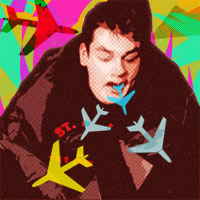 She hasn’t sought professional help. “The courses I’ve seen publicised tend to focus on helping you understand how safe flying is by explaining the mechanics of the process. That’s the last thing I want to know. The more able I am to try and forget that I’m hurtling through the air in a metal tube, the better.” While alcohol helps “a bit”, she has never tried any type of medication or drugs as she often flies with clients or her daughter. “Flying alone is probably worse, as I’m often very focused on not letting on how nervous I am as I don’t want to transfer my fears to my daughter or worry my fellow travellers.
She hasn’t sought professional help. “The courses I’ve seen publicised tend to focus on helping you understand how safe flying is by explaining the mechanics of the process. That’s the last thing I want to know. The more able I am to try and forget that I’m hurtling through the air in a metal tube, the better.” While alcohol helps “a bit”, she has never tried any type of medication or drugs as she often flies with clients or her daughter. “Flying alone is probably worse, as I’m often very focused on not letting on how nervous I am as I don’t want to transfer my fears to my daughter or worry my fellow travellers.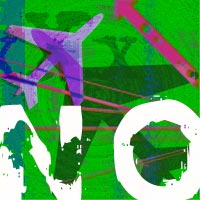 She advises that fearful flyers recognise their tendency to believe that “harmless body symptoms” are signs of imminent danger (which they are not) and that they adopt “an attitude of benevolent acceptance” of fear-related symptoms and beliefs, which helps to calm both mind and body. She also points out that fear attacks are limited and will peak and start to subside in a few minutes and advises fearful flyers to concentrate on breathing slowly and evenly, exhaling longer than they breathe in.
She advises that fearful flyers recognise their tendency to believe that “harmless body symptoms” are signs of imminent danger (which they are not) and that they adopt “an attitude of benevolent acceptance” of fear-related symptoms and beliefs, which helps to calm both mind and body. She also points out that fear attacks are limited and will peak and start to subside in a few minutes and advises fearful flyers to concentrate on breathing slowly and evenly, exhaling longer than they breathe in.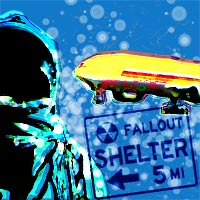 In New Zealand, Flying without Fear, in association with Air New Zealand, offers a course (
In New Zealand, Flying without Fear, in association with Air New Zealand, offers a course (